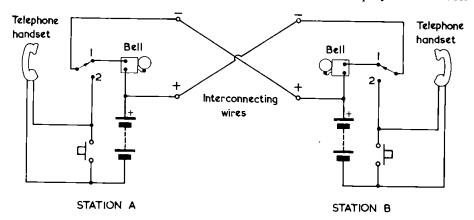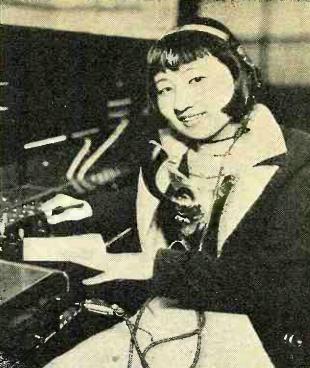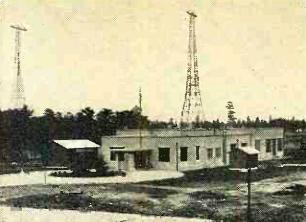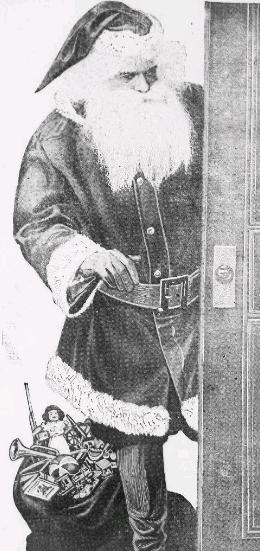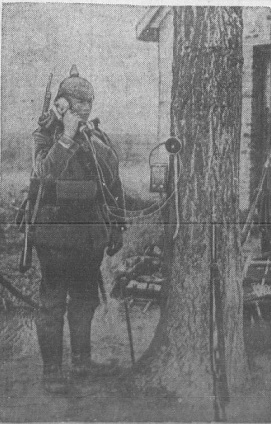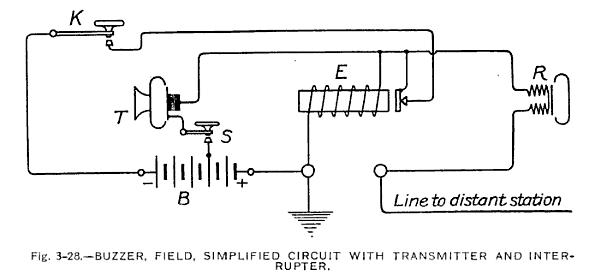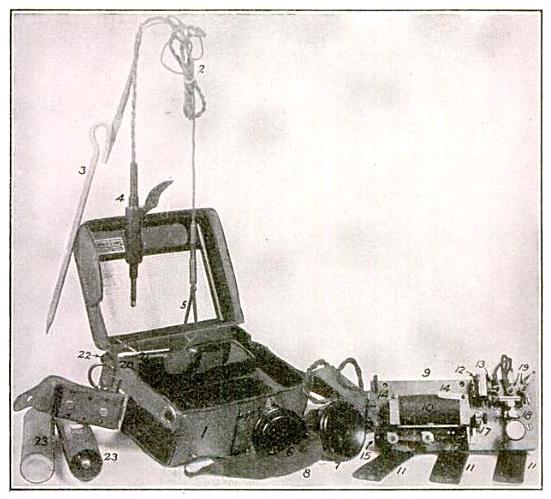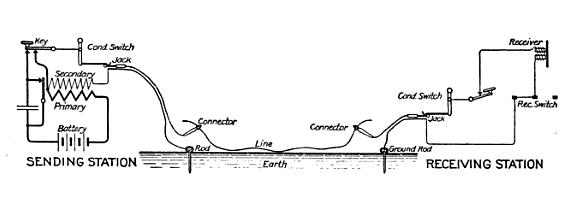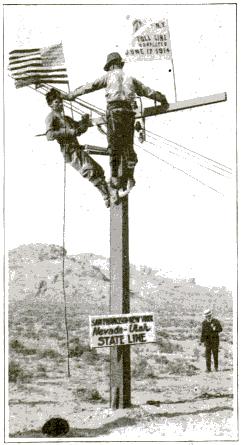It’s a relatively trivial matter to hook up two telephones so that you can talk from one to another. Virtually any old telephone can be used, and it’s simply a matter of placing a battery (the voltage is not critical) in series. So if you need to hook up two telephones to talk, it’s about as easy as it gets.
It’s more difficult, however, to figure out a way to make the other telephone ring. The telephone itself operates off DC. The ringer sounds when an AC voltage is applied. And there’s no particularly simple way of generating that AC voltage. The easiest way to solve the problem is to run a second circuit with a bell, buzzer, or light. If you want to talk to the other station, you push a button, a bell (separate from the phone) sounds at the other end, and the other person picks up the phone.
The ingenious arrangement shown above shows a way to wire it all up so that a single circuit can handle both the bell and the telephone line. When one station wants to call, he pushes the button to signal the other station. Then, both sides put the switch on position 2, and they can talk. This circuit, and all the details for constructing it, are found in the April 1966 issue of Radio Constructor, a British electronics magazine.
Click Here For Today’s Ripley’s Believe It Or Not Cartoon ![]()

